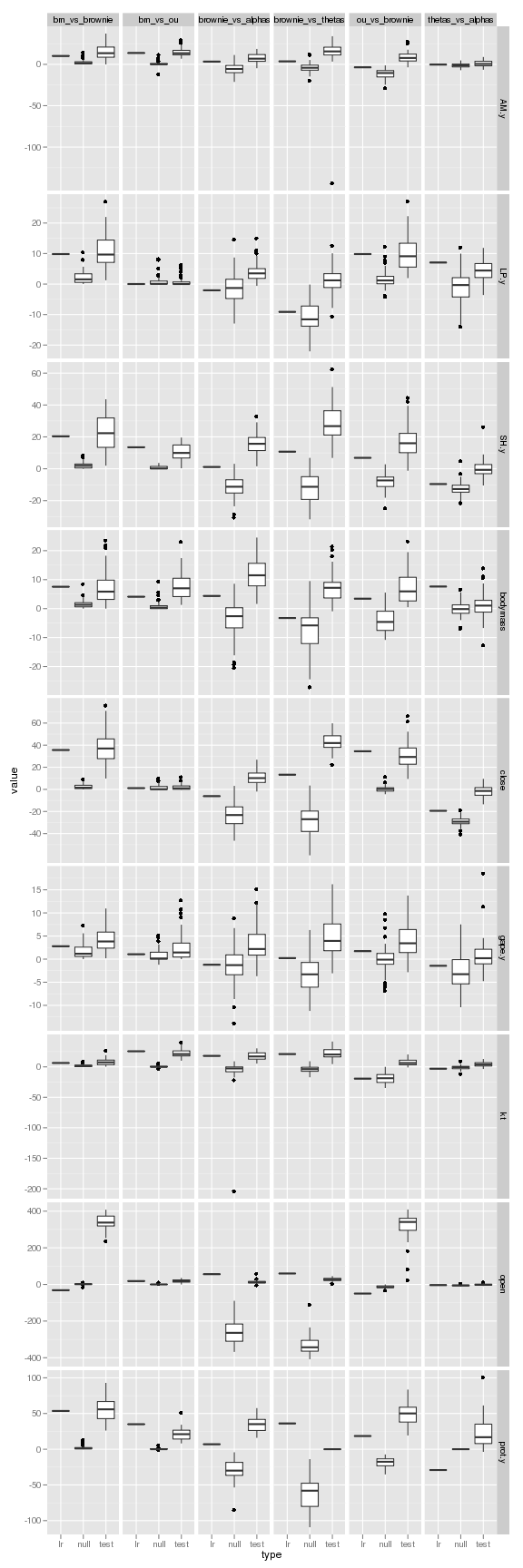Here’s a table of all the comparisons, indicating which is the preferred model in each pairwise comparison. (In my outline, Figure 4 shows the bm3 v a3 for KT and open lever ratio, and Fig 3 shows the actual parameter values for those models). This table is all for the case that allows shifts at both pharyngeal and the intramandibular transitions. I have graphs of the actual parameter values as well (which we need to see if the constraint has increased or decreased at the transition, and by how much), but gets complex quickly.
I focused on Brownie rather than OU with sigmas varying because it is a simpler model with a cleaner interpretation. It also has more significant results due to this simplicity. I focused on the KT and open because they have the most significant difference between the Brownie model (bm3) and the release of constraint model (a3).
Note below that some comparisons are nested while others are not. Note that we rarely have the power to tell a3 from t3 (both are 6-parameter models). Results restricted to the parrotfish tree with the intramandibular tranisititon don’t usually have the power to get many significant differences.
regimes = two_shifts
| comparison | bodymass | close | open | kt | gape.y | prot.y | AM.y | SH.y | LP.y |
|---|---|---|---|---|---|---|---|---|---|
| bm v bm3 | bm3** | bm3** | bm*** | bm3 | bm3 | bm3*** b | m3** | bm3** | bm3** |
| bm v ou | ou** | NS | ou* | ou*** | NS | ou*** o | u** | ou* | NS |
| bm3 v a3 | NS | NS | a3*** | a3*** | bm3** | NS | a3* | NS | bm3** |
| bm3 v t3 | bm3** | NS | t3*** | t3*** | NS | t3*** | NS | NS | bm3** |
| ou v bm3 | bm3** | bm3** | ou*** | ou*** | NS | NS | NS | NS | bm3** |
| t3 v a3 | NS | t3 | NS | NS | NS | NS | NS | t3** | a3* |
| key | model |
|---|---|
| bm | brownian motion |
| ou | Ornstein-Uhlenbeck |
| bm3 | “Brownie” with three regimes (intramandibular and pharyngeal shifts) |
| a3 | OU with three regimes for alphas parameter |
| t3 | “ouch”, OU with three regimes for theta parameter |
| NS | Not significant difference in comparison |
summary results as figure
